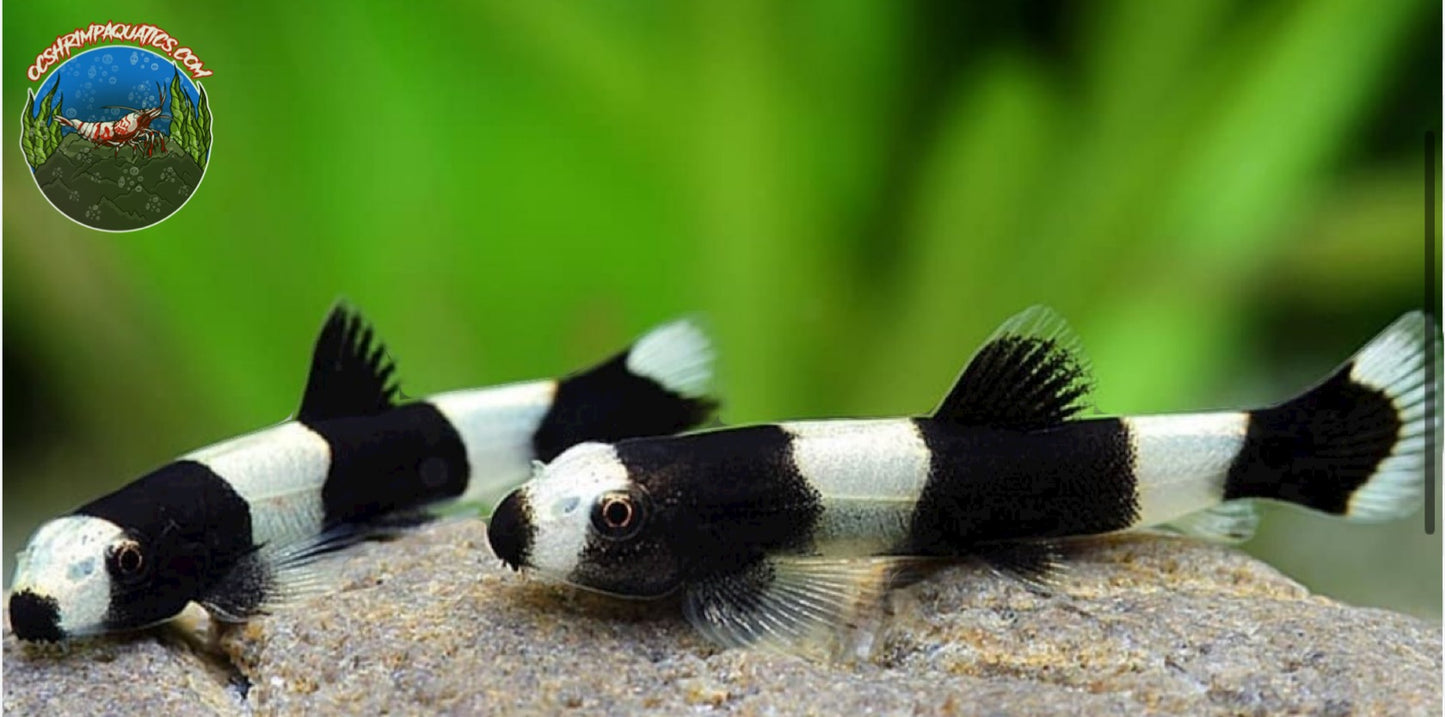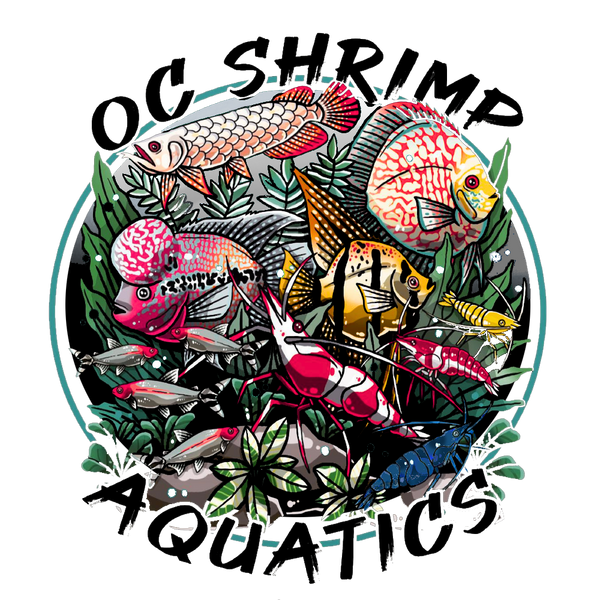OC SHRIMP AQUATIC
PANDA LOACH
PANDA LOACH
Couldn't load pickup availability
Share
The Panda Loach (Ambastaia nigrolineata) is a visually striking freshwater fish known for its distinctive black and white markings. Also known as the Panda Loach or Panda Striped Loach, it’s a popular choice among aquarium enthusiasts due to its attractive appearance and lively behavior. Here’s a detailed guide to caring for Panda Loaches:
Tank Setup
-
Tank Size: A minimum tank size of 30 gallons is recommended. Panda Loaches are active swimmers and need ample space to thrive.
-
Tank Environment: Create a well-structured environment with plenty of hiding spots and areas to explore. Use driftwood, rocks, and live plants to mimic their natural habitat. Panda Loaches enjoy having places to hide and explore, which helps reduce stress.
-
Substrate: A soft substrate like sand or fine gravel is ideal. Avoid sharp or rough substrates that can damage their delicate barbels. Sand is particularly good for their natural foraging behavior.
Water Conditions
-
Temperature: Maintain a stable water temperature between 72-78°F (22-26°C). Use a reliable heater to ensure consistent temperatures.
-
pH Level: Panda Loaches prefer slightly acidic to neutral water. Aim for a pH range between 6.0 and 7.5.
-
Water Hardness: They thrive in soft to moderately hard water. Aim for a hardness range of 2-15 dGH.
-
Filtration: Use a filtration system that provides clean, clear water without creating strong currents. Sponge filters or hang-on-back filters with sponge pre-filters are suitable. Regular water changes (about 20-30% weekly) are important for maintaining water quality.
Diet
-
Diet: Panda Loaches are omnivorous and enjoy a varied diet. Feed them high-quality sinking pellets, live or frozen foods like bloodworms, brine shrimp, and daphnia. They also graze on algae and biofilm in the tank.
-
Feeding: Feed them once or twice a day. Provide only as much food as they can consume within a few minutes to prevent overfeeding and water pollution.

Order and get 190 reward points
Earn points by signing up for our rewards program

